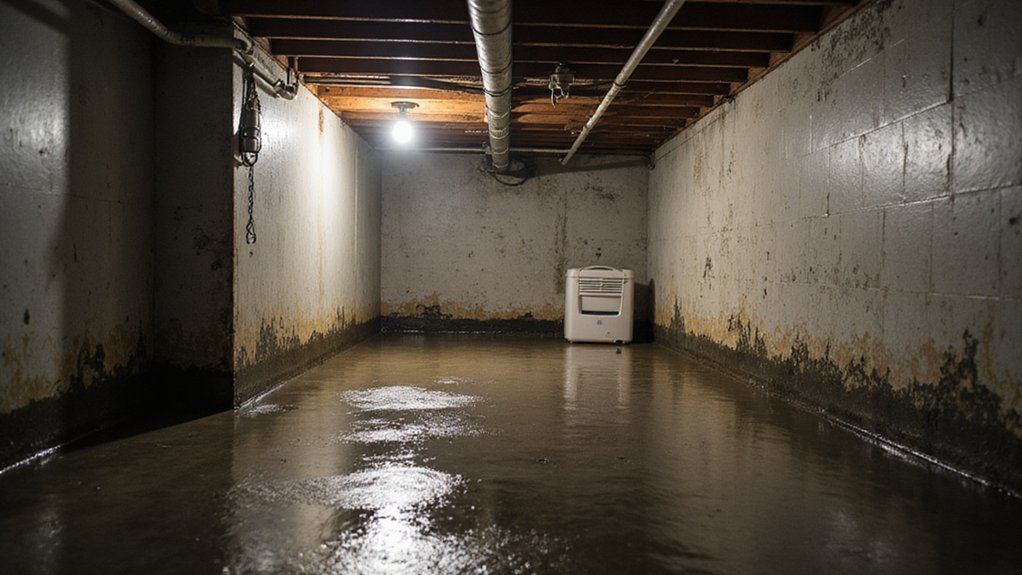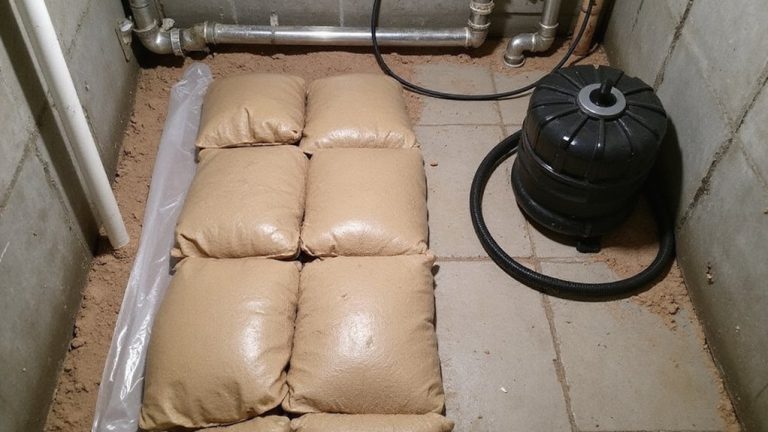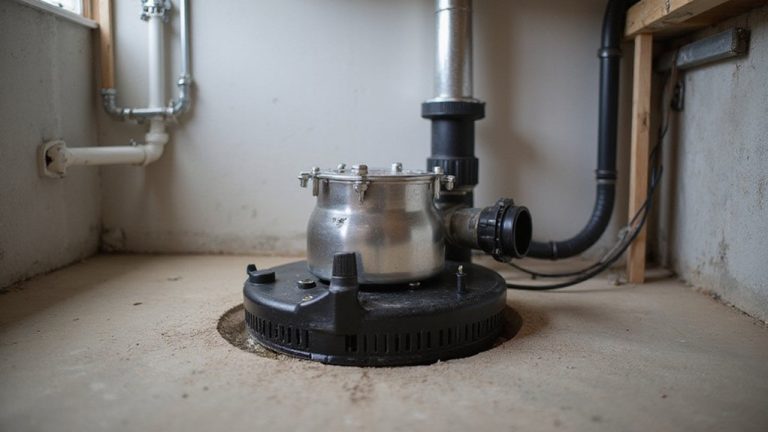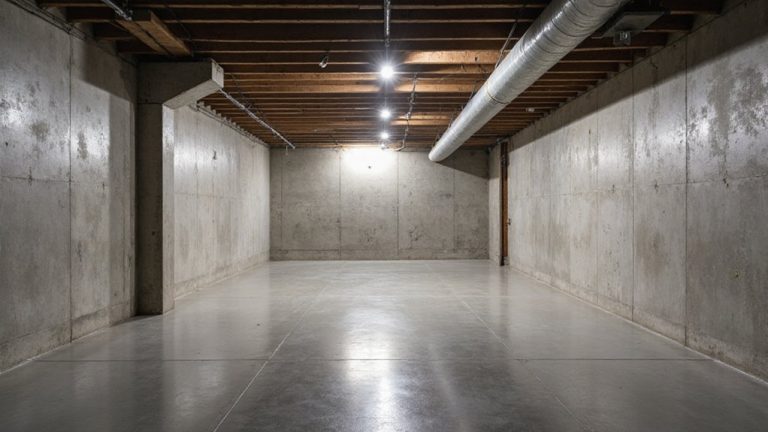If your basement always feels damp and musty, you’re not alone. Basement dampness is a common problem that can stem from a variety of issues, from poor drainage to structural cracks. But don’t worry – there are effective ways to diagnose and address the root causes. By understanding the sources of moisture and taking the right steps to waterproof and ventilate your basement, you can investigate it into a dry, healthy space. Let’s scrutinize the key steps to resolving your basement’s dampness woes.
Common Causes of Basement Dampness
If your basement always feels damp or you notice musty odors, there are several common culprits.
One of the most common causes is improper soil grading around your home’s foundation. If the ground slopes towards your basement, it can allow water to seep in.
Another issue is poor drainage, where water may not be able to effectively flow away from your home. This can lead to the buildup of moisture in your basement.
Addressing these underlying problems through proper soil grading and effective drainage solutions can often resolve persistent dampness. In severe cases, you may need to address foundation water damage through professional assessment and repair services.
Identifying the Source of Moisture
Where do you suspect the moisture is coming from? Take a close look at the basement and identify any potential water intrusion points, such as cracks in the foundation, gaps around windows and doors, or issues with the drainage system. These could be the culprits behind the persistent dampness. Foundation repair experts in Cleveland Heights recommend a comprehensive assessment to diagnose moisture problems before they escalate into more serious structural damage. If you can’t pinpoint the source, the problem may be due to underlying structural issues. Performing a thorough inspection can help you determine the root cause and develop an effective solution. Understanding the source of the moisture is the first step in addressing the dampness in your basement.
Improving Basement Ventilation
Improving basement ventilation can make a significant difference in addressing the persistent dampness you’ve been experiencing.
Install a dehumidifier to actively remove excess moisture from the air.
Guarantee adequate ventilation by opening windows or using exhaust fans when possible.
Seal any cracks or gaps in the foundation to prevent outside air and moisture from entering.
Consider adding a vent system to increase airflow and boost air circulation throughout the basement.
Addressing the ventilation issues in your basement can help mitigate the dampness and create a healthier, more comfortable living space.
Addressing Leaks and Cracks
Addressing the leaks and cracks in your basement is indispensable for resolving the persistent dampness. Sealing penetrations, such as openings around pipes and wiring, is essential to prevent moisture intrusion.
You’ll also want to improve drainage by ensuring gutters and downspouts direct water away from the foundation. This may involve regrading the soil around the basement or installing French drains. Properly sealing cracks in the walls and floor can further enhance your efforts. Taking these measures will help you eliminate the dampness and revamp your basement into a dry, usable space.
Waterproofing the Basement
Waterproofing your basement is a critical step in addressing the persistent dampness. To effectively waterproof your basement, consider the following:
- Sealing the floors: Apply a high-quality concrete sealer to the basement floor, guaranteeing a watertight barrier against moisture. This will help prevent water from seeping up through the concrete.
- Applying sealants: Use a flexible, waterproof sealant to fill any cracks or gaps in the walls, floors, and around windows and doors. This will create a barrier against water intrusion.
- Installing a vapor barrier: Place a plastic or foil-backed vapor barrier between the concrete floor and any flooring materials to prevent moisture from rising up.
- Ensuring proper drainage: Confirm that water is directed away from the foundation, either through gutters, downspouts, or a properly graded terrain.
Dehumidifying the Space
Once you’ve taken steps to waterproof your basement, you’ll want to address the lingering dampness. Dehumidifying the space is essential to maintaining a dry, comfortable environment. Proper unit sizing is key – choose a dehumidifier that can effectively handle the square footage of your basement.
Effective drainage solutions, like installing a network of drainage pipes, will help remove excess moisture and prevent damp issues from recurring. By addressing both waterproofing and dehumidification, you can convert, change, or alter your once-damp basement into a dry, usable area of your home.
Preventing Future Dampness Issues
Guaranteeing your basement stays dry in the future requires a thorough approach.
- Improve humidity control by installing a high-efficiency dehumidifier. This will regulate moisture levels and discourage mold growth.
- Seal any cracks or openings in the foundation to prevent water intrusion. Use a quality sealant and guarantee proper application.
- Upgrade your drainage system by adding or improving exterior and interior drainage to direct water away from the basement.
- Consider installing a vapor barrier on the walls and floors to further inhibit moisture absorption and mold prevention.
Maintaining a Dry, Healthy Basement
How can you maintain a dry, healthy basement and prevent future issues? Running a dehumidifier is key. It’ll remove excess moisture and keep the air comfortable.
Maintaining the basement temperature is also important. Aim for a consistent, moderate temperature to discourage dampness. Avoid extreme hot or cold, which can lead to condensation.
With a dehumidifier and temperature control, you’ll create an environment that resists mold, mildew, and other moisture problems. A dry, healthy basement provides a clean, usable space. It protects your home and gives you peace of mind.
Stay on top of basement maintenance for long-term benefits.
Frequently Asked Questions
How Do I Know if My Basement Needs Professional Help?
If your basement feels damp and you suspect improper drainage or inadequate ventilation, it’s time to call in a professional. They’ll diagnose the issue and provide the right solutions to make your basement feel like home again.
What Are the Signs of a Structural Issue in the Basement?
Cracked foundation walls and uneven floor surfaces are signs your basement may have structural issues. These problems require professional attention to guarantee your home’s safety and prevent further damage.
Can I Use a DIY Waterproofing Kit to Fix My Basement?
You can try DIY basement waterproofing with a kit, but professional basement waterproofing methods are often more effective. Carefully evaluate your basement’s needs to determine the best waterproofing solution for your home.
How Often Should I Inspect the Basement for Dampness?
You should perform seasonal visual inspections to check for dampness in your basement. Look for signs like condensation, musty odors, or discolored walls – addressing any issues promptly will help maintain a dry, comfortable space.
Will a Dehumidifier Solve All My Basement Moisture Problems?
A dehumidifier can help, but proper ventilation requirements and other moisture mitigation strategies are needed to fully address your basement’s dampness. It’s a team effort to create a comfortable, dry living space.



